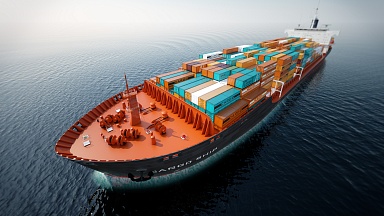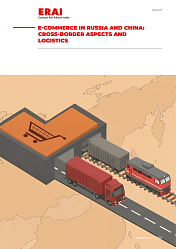We sincerely appreciate your interest in our work. We will resume publishing market updates on a biweekly basis. Please feel free to contact us at info@index1520.com with any questions or feedback.
China-Europe logistics market
Demand outlook
-
China’s economic situation in May shows mixed trends: retail sales accelerated (6.4% YoY) and industrial production grew (5.8% YoY), but deflationary pressure persists (CPI: −0.1% YoY) alongside weak investment activity [SCMP]. Foreign trade faces challenges. China’s export growth in May underperformed due to a sharp drop in shipments to the US (-34.5% YoY) [CNBC]. Overall exports rose 4.8% in USD terms (below the expected 5%), driven by demand from the EU (12% YoY), Southeast Asia, and Africa. Weak domestic demand led to a 3.4% drop in imports, worse than economists’ expectations (0.9%).
-
In May 2025, the HCOB export conditions index remained in growth territory at 50.4 (April: 50.2) [S&P Global]. The export orders index hit 51.0, the highest since February 2022, primarily driven by US demand, while Asia and Europe remain sluggish. Machinery leads sectoral activity (PMI: 55.3), with chemical and auto parts sectors showing selective demand recovery from Asian markets.
-
From January to May, China—Europe—China rail container shipments fell 19% YoY. Total May shipments across all competitive routes dropped 15% YoY but rose 36% MoM, largely due to increased demand on the Central Eurasian Corridor (+38% MoM). Middle corridor route volumes also grew (+11% MoM) but remain below yearly averages.
-
Shippers are actively booking slots for July, with upcoming trains nearly fully reserved [Flexport]. Major forwarders note the start of the peak season, expected to last 2–3 months [JOC]. High demand and early bookings may reflect market concerns, particularly amid rising instability in the Middle East.
Freight rate trends
-
The average rate for China-Europe rail transport (SOC) remained nearly unchanged over the past month, ranging from $5 250 (Chengdu) to $6 850/FEU (Shenzhen). Container provision costs dropped by 10%.
-
The WCI Shanghai-Rotterdam index stayed flat at $2 837/FEU last week (39% MoM, −54% YoY) [Drewry]. UPDATE: As of the evening of June 19, 2025, the latest WCI Shanghai-Rotterdam reading has risen by 12% WoW, reaching $3 171/FEU. Analysts say future rate trends remain uncertain, hinging on tariff disputes and potential U.S. sanctions on Chinese vessels. However, improved demand-supply balance, early peak season bookings, trade war-driven cargo rerouting, and port congestion could boost rates. Major lines, anticipating sustained demand, announced General Rate Increases (GRI) and Peak Season Surcharges (PSS) from mid-June. CMA CGM’s Shanghai-Rotterdam quotes for early July exceed $4 600/FEU; ONE set $4 040/FEU; Maersk, known for participation in «price wars,» quoted $3 400/FEU [GeekYum].
-
Futures traders are factoring in new developments, with only longer-term contracts rising. The futures curve suggests Asia-Europe shipping costs will climb to ~$2 600/FEU by late August (down from ~$2 700 two weeks ago) [Shanghai Futures Exchange].
China-EAEU logistics market
Import and export trends
-
The Bank of Russia lowered the key rate to 20% for the first time in three years. The last time the Central Bank eased monetary policy was in September 2022, when the rate was reduced from 8% to 7.5%. The Central Bank explained the rate cut by a gradual slowdown in inflation and the Russian economy’s return to a «balanced growth trajectory.» However, the regulator will maintain a tight monetary policy to achieve the 4% inflation target.
-
Nevertheless, according to Elvira Nabiullina, further rate reductions require caution and may involve pauses between steps. A rate hike in the future is also possible [Kommersant]. In 2025, the regulator plans to stick to its forecast of an average key rate of 19.5–21.5%. The rate cut does not indicate significant easing of monetary conditions. Inflation is trending closer to the lower end of the 7–8% forecast by the end of 2025. A downward revision of the forecast is possible at the July meeting.
-
Three-quarters of Russian companies plan to cut expenses, according to a study by the Russian Union of Industrialists and Entrepreneurs [Forbes]. Reasons include loan inaccessibility and a sharp drop in demand, forcing businesses to radically change budget management and hiring approaches.
-
The initial easing of the key rate could signal positive prospects for importing various products, but the Central Bank remains extremely cautious and may tighten conditions again if expectations are not met. Tensions in the Middle East could positively impact the Russian economy by increasing energy prices and shifting geopolitical focus. In the next month, the ruble exchange rate may remain relatively stable. At the current rate, exporters find it unprofitable to sell foreign currency earnings, but companies withholding these earnings amid rising importer demand could weaken the national currency and cause sharp fluctuations.
-
From January to May 2025, Russian Railways transported 3.188 million TEUs (loaded and empty) across all types of traffic, down 1.7% YoY [Russian Railways]. In May, the volume was 630 thousand TEUs, up 2.3% MoM.
-
Import rates for multimodal transport from China to Moscow remain stable without significant changes. The cost of transport via Far East ports is ~$4,500/FEU, consistent with the past month and a half. Direct train transport rates dropped by $450 to ~$4,050/FEU, due to weak demand and lower container provision rates.
Other trends
-
During a meeting in Almaty between the First Vice-Minister of Trade of Kazakhstan and the Vice-Governor of Shandong Province, an agreement was reached to establish a joint logistics operator to serve the markets of Central Asia, the EAEU, and Europe [Kazakhstan Ministry of Trade].




